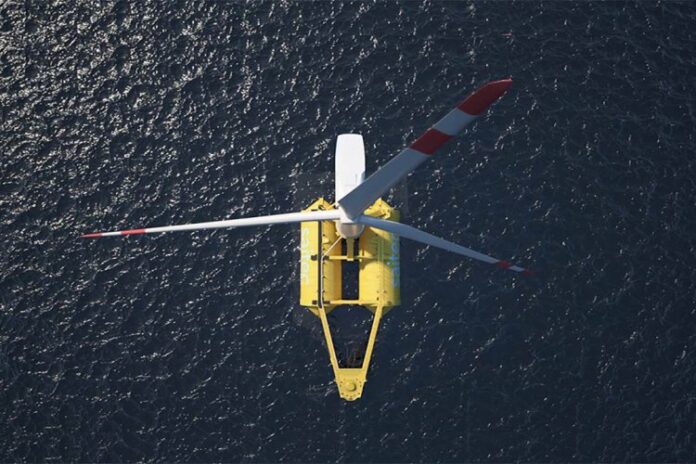Saitec Offshore Technologies announces the beginning of the construction of its SATH floating platform within the framework of the DemoSATH Project.
The work package has been awarded to Ferrovial, which will carry out the works in the Port of Bilbao (Spain).
The construction package will last 14 months and covers site preparation, concrete precasting, procurement of steel bulkheads and assembly of the floater along with management of the supply chain.
Alberto Val, Ferrovial Construction Manager in Basque Country, said:
“This is Ferrovial’s first floating offshore wind project and it represents a great opportunity to add value to the project, based on our experience in marine construction and landmark pre-stressed concrete structures. Moreover, this project has a large innovation component, not only because of the materials but also because of the manufacturing and assembly processes that it will develop.”
The DemoSATH project will deploy the first multi-megawatt floating offshore wind turbine connected to the Spanish grid. For the prototype, the structure and the 2MW wind turbine will be assembled in the Port of Bilbao. The base of the structure will be approximately 30 meters wide and approximately 64 meters long. The platform, including the turbine, will be towed to its anchorage point in a test field (BIMEP) 2 miles off the coast at a depth of 85 meter. Hybrid mooring lines, composed by chains and fiber, anchored to the seabed will hold the floating body in position. The unit is expected to go into operation early 2022.
David Carrascosa, Chief Technology Officer of Saitec Offshore Technologies, said:
“Our ambition is to rapidly advance towards commercial production. DemoSATH is therefore not only proving the technical feasibility of the SATH technology, but is also demonstrating how these structures can be mass produced.”
The power generated by DemoSATH will provide enough annual electricity to meet the power needs for 2,000 homes and will prevent emissions of more than 5,100 tons of CO2 into the atmosphere.
Sven Utermöhlen, Chief Operating Officer Wind Offshore Global of RWE Renewables GmbH, said:
“We are pleased to see that the DemoSATH project is entering the manufacturing phase now and making good progress towards offshore installation in 2022. We see great potential for floating wind farms worldwide, especially in countries with deeper coastal waters, where this opens up attractive opportunities. As part of this large-scale demonstration project, we are gaining experience with an innovative concrete-based platform technology that will help us to position ourselves in this growth market.”
The objective of the project is to collect data and gain real-life knowledge from the construction, operation and maintenance of the unit. DemoSATH will test the offshore behaviour of the platform in addition to the construction procedure to be used in future for mass production. The various sections of the floater will be first precast and then assembled in order to prove the efficiency of the industrial fabrication we have conceived for upcoming commercial windfarm developments.
SATH technology will also demonstrate its capacity as a local content enabler, largely due to the use of concrete as main construction material. The DemoSATH project will spend 90% of its construction budget with the local supply chain (less than 50km away from the site.)



